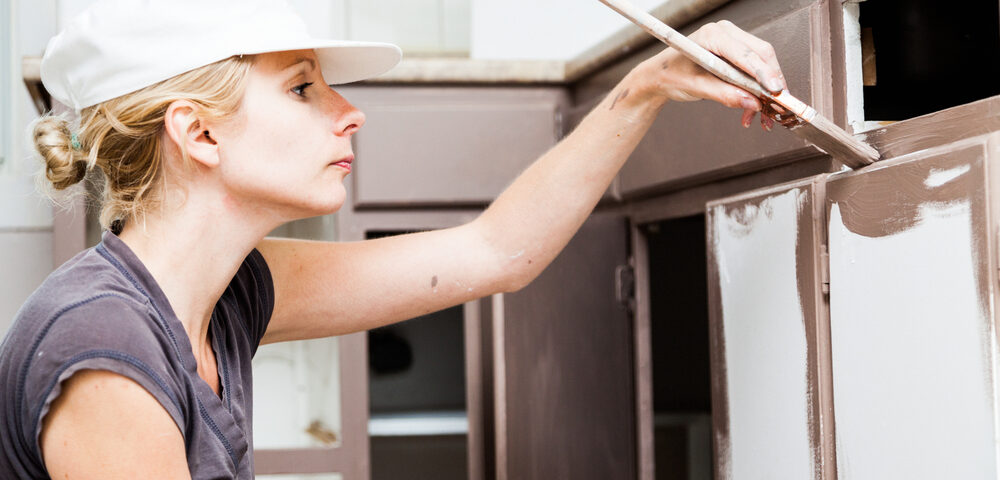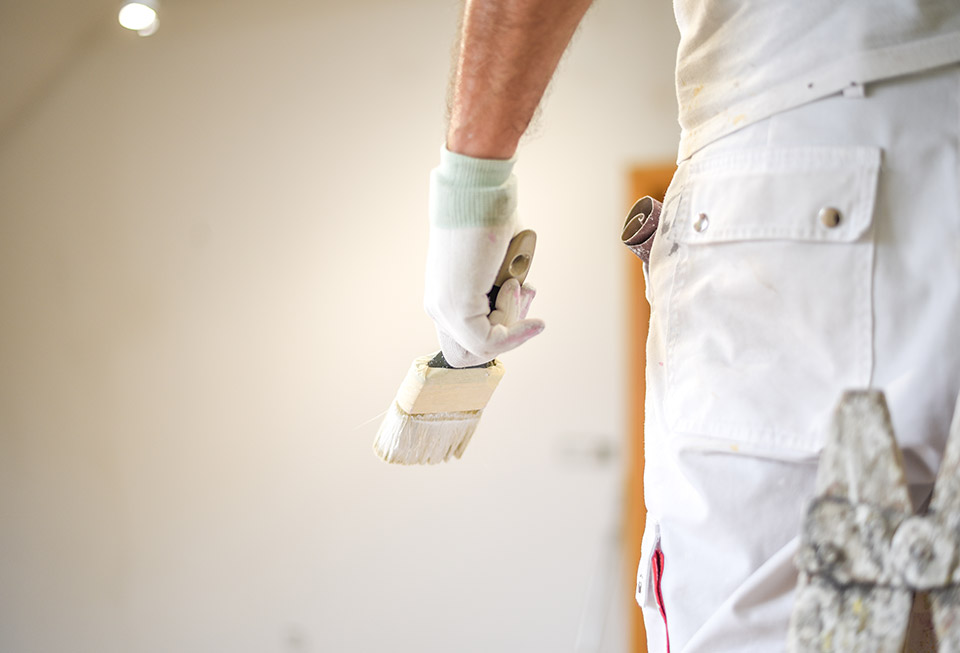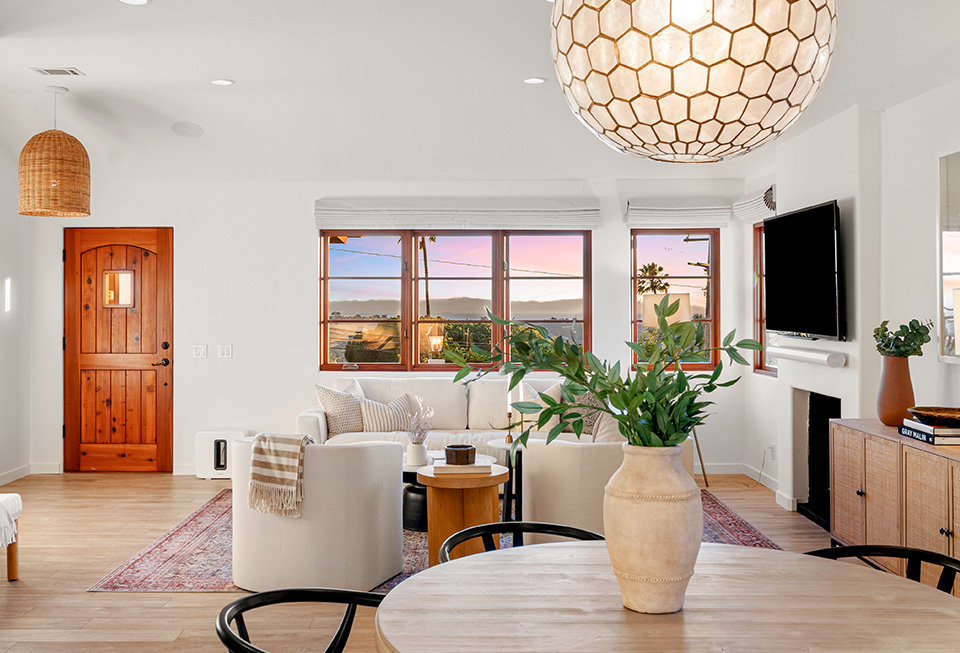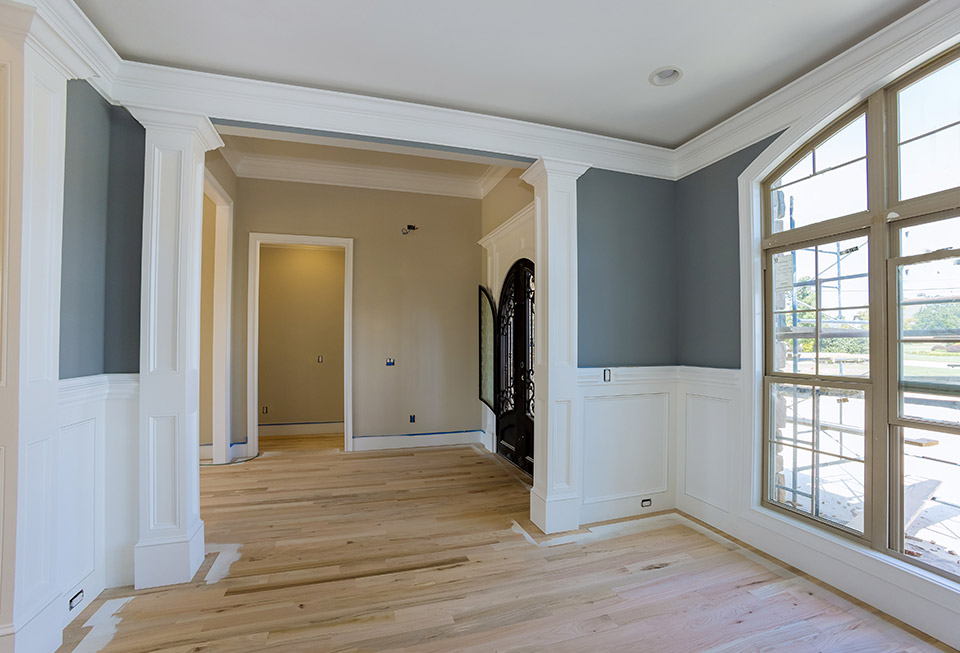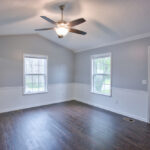
You need to know about painting popcorn ceilings
October 19, 2021
Five paint colors that make rooms look bigger
November 10, 2021We’ve all shared the same thought when confronted, day after day, by those persistent stains, scratch marks and peeling paint on our cabinets.
It’s time for a paint job.
Now, I know that it’s easy to get flustered if you’re trying to get started. Cabinet painting can be that shady alley you stumble on where one wrong turn means you’re in trouble.
Sure, your cabinets need a good touch-up from time to time but not knowing the right way to go about it, including how to prepare your cabinets for the paint and the right paint to use, can be overwhelming.
That’s why in this post, I’ve put together answers to a few questions you may have before you embark on a successful DIY cabinet painting project.
Let’s get right to it!
How can I prepare before I start painting my cabinets?
When it comes to painting projects, no matter how precise and careful you are, accidents still happen. To avoid this, just prepare your area by protecting your floors, countertops and other surfaces with either a tarp, drop cloth or masking paper.
This will help you make sure those inevitable splatter marks don’t damage your furniture or appliances, and will keep your kitchen spick and span afterwards!
Another great way to prepare is to make sure your cleanup is less of a nightmare by labelling your cabinets. Before starting off, make sure you’re making note of each cabinet and drawer along with their appropriate hinges. If you don’t, you might be in for a cabinet-shaped puzzle once the paint dries😆
Is there a difference between cabinet paint and regular paint?
The simple answer here is, yes there is. While you can use regular paint on your cabinet, just remember that the formula used to make this paint is better-suited for walls.
When you’re comparing cabinet paint with regular paint, what you need to keep in mind is that the former is meant to be more long-lasting given how time-consuming and complicated it can be to paint your cabinets frequently.
As a result, this kind of paint tends to be of higher quality, scratch-resistant and formulated for long term wear and tear.
Because they differ in formulas, cabinet paint is also generally priced higher—but completely worth it in my opinion 🙂
What’s the perfect paint finish for my cabinets?
Drumroll, please…The answer is semi-gloss or a satin finish.
A satin finish is usually used for cabinets that are not exposed to areas with high levels of moisture; if you’re looking to hide imperfections on your cabinets while giving them that extra charm, a satin finish is the perfect choice.
Semi-gloss, on the other hand, is used to create an effect of constant luster. In using this finish, an insider insight I’m going to share with you is that semi-gloss can amplify paint imperfections.
When going for this kind of finish, therefore, it’s important that you sand your cabinets properly and apply an even number of coats for fresh, revamped cabinets😍
A few final tips for cabinet painting success!
One thing I always tell my teams is that when it comes to great paintwork, you can’t be stingy or frugal.
With high-quality paint, you’re going to get your money’s worth with better coverage and long-lasting results. Beyond just the paint though, this also extends to the types of brushes you use.
While you could go for a regular brush to reach those tough corners and edges, another option would be to use a compressor with a sprayer for a faster, more precise job. One thing you need to keep in mind, however, is that this requires a steady arm.
Another tip is to make sure your paint is completely dry before sanding or applying the next coat of paint.
Ready? Good luck with your DIY painting project!
Cabinet painting isn’t a daunting task—all you have to do is take your time, prepare your cabinets and spaces, and follow all of our cabinet painting best practices😉
If you need any support, just speak to the pros.
